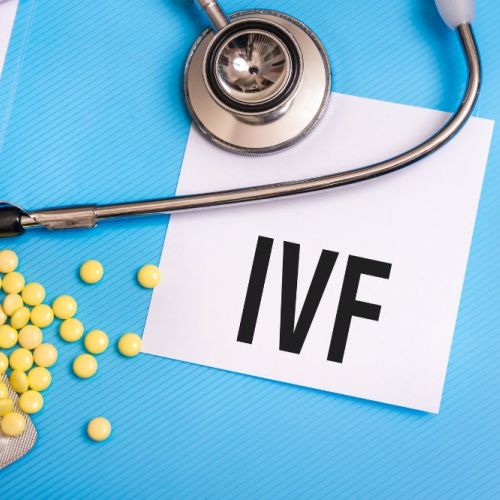Embryo Transfer: All Your Questions Answered

As the last step of the IVF process, embryo transfer is a quick procedure with one simple objective: a successful pregnancy. Although most couples are excited and hopeful, many are also a bit nervous and unsure of what to expect.
If you’ve been scheduled for an embryo transfer, here’s everything you need to know about the timing of your procedure, the process itself, and what comes afterward.
Embryo transfer timing
The embryo transfer process usually takes place five to six days after the egg retrieval procedure. During that waiting period, the eggs are mixed with sperm for fertilization and the resulting pre-embryos are cultured in a controlled environment for three to five days.
Although it’s possible to transfer pre-embryos as soon as they reach the two-cell stage, it can be beneficial to wait a little longer, until they’ve reached the blastocyst stage. This stage, which occurs around the fifth day of in-lab culturing, means they’ve gone through a period of rapid cell division and now have 200-300 cells.
Waiting until your embryos have reached the blastocyst stage also allows enough time to check for genetic abnormalities with preimplantation genetic screening (PGS) tests.
Embryo transfer process
Many women are happy to learn that the embryo transfer process is simpler than the egg retrieval process, which is a minor surgical procedure that requires twilight anesthesia. Because you won’t need anesthesia for your embryo transfer, there are no food or drink restrictions the night before or day of your appointment.
The procedure itself is quick and fairly straightforward. After a series of verifications to ensure you receive the correct embryo, your embryo (or a predetermined number of embryos) is carefully loaded into one end of an ultra-fine, sterile transfer catheter; the other end is gently inserted through your vagina and cervix and into your uterus with the guidance of ultrasound imaging.
After the embryo is transferred from the catheter to your uterus, you rest on your back in the recovery room for a few hours. You can chat with your partner, read a book, watch television, or simply relax until you’re discharged.
Post-embryo transfer activity
Although you shouldn’t feel any pain following your embryo transfer, you may experience minor abdominal discomfort or a feeling of fullness in your lower abdomen, near your ovaries.
It’s a good idea to take it easy and avoid unnecessary stress in the days following your embryo transfer, but it’s also important to note that bed rest won’t increase your chances of becoming pregnant. After a couple of days, you can resume your normal routine and move about freely.
Following your embryo transfer, you’ll continue to take supplemental progesterone, a hormone that both increases your chances of successful implantation and helps sustain pregnancy once it occurs. You can stop taking progesterone once your pregnancy is confirmed and your body is making enough on its own.
Finally — your pregnancy test
Although you may be watching for early signs and symptoms of pregnancy from the start, you won’t take a pregnancy test for 10 days. At that time, you’ll come back into our office and have a blood test, which is conclusive even in the early days.
If it’s positive, congratulations! The transfer was successful, and you’re pregnant. If it’s negative, don’t be discouraged — our team can walk you through your options and next steps.
At California Center for Reproductive Health, our IVF/embryo transfer success rates consistently beat the national average. Call today or schedule an appointment online at one of our clinics in Encino, West Hollywood, Monica, or Valencia, California.
Eliran Mor, MD
Reproductive Endocrinologist located in Encino, Santa Monica, Valencia & West Hollywood, CA
FAQ
Reproductive endocrinology and Infertility is a sub-specialty of Obstetrics and Gynecology. In addition to managing medical and surgical treatment of disorders of the female reproductive tract, reproductive endocrinologist and infertility (REI) specialists undergo additional years of training to provide fertility treatments using assisted reproductive technology (ART) such as in vitro fertilization.
Reproductive endocrinologists receive board certification by the American Board of Obstetrics and Gynecology in both Obstetrics and Gynecology and Reproductive Endocrinology and Infertility.
In general, patients should consider consulting with an REI specialist after one year of trying unsuccessfully to achieve pregnancy. The chance of conceiving every month is around 20%, therefore after a full year of trying approximately 15% of couples will still not have achieved a pregnancy.
However, if a woman is over the age of 35 it would be reasonable to see a fertility specialist earlier, typically after 6 months of trying.
Other candidates to seek earlier treatment are women who have irregular menses, endometriosis, fibroids, polycystic ovary syndrome (PCOS), women who have had 2 or more miscarriages, or problems with the fallopian tubes (prior ectopic pregnancy).
Approximately 1/3 of the time cause for infertility is a female factor, 1/3 of the time a male factor, and the remaining 1/3 a couples’ factor.
At CCRH, we emphasize the importance of establishing a correct diagnosis. Both partners undergo a comprehensive evaluation including a medical history and physical exam.
Furthremore, the woman’s ovarian reserve is assessed with a pelvic ultrasound and a hormonal profile. A hysterosalpingogram (HSG) will confirm fallopian tube patency and the uterine cavity is free of intracavitary lesions. A semen analysis is also obtained to evaluate for concentration, motility, and morphology of the sperm.
Additional work up is then individualized to direct the best possible treatment option for each couple.
In vitro fertilization (IVF) is the process that involves fertilization of an egg outside of a woman’s body.
The process starts with fertility drugs prescribed to help stimulate egg development. In your natural cycle, your body is only able to grow one dominant egg, but with stimulation medication we can recruit multiple eggs to continue to grow. After about 8-10 days of stimulation, the eggs are surgically retrieved and then fertilized with sperm in a specialized laboratory. Fertilized eggs are then cultured under a strictly controlled environment within specialized incubators in the IVF laboratory for 3-5 days while they develop as embryos. Finally, embryos (or an embryo) are transferred into the uterine cavity for implantation.
Before deciding if IVF is the right choice, it’s important to sit down with an REI specialist to discuss available treatment options. For some people, other methods such as fertility drugs, intrauterine insemination (IUI) may be the best first choice treatment. At CCRH, we believe each individual couple is unique and not everyone needs IVF.
While not painful, the fertility medications may some side effects including headaches, hot flashes, mood swings, and bloating. The injection sites may also bruise.
Unfortunately, no. Many people think once they start IVF it’s a matter of time that they will be pregnant and have a baby. But according to national statistics per the Society of Assisted Reproduction (SART), on average 40% of assisted reproduction cycles achieve live births in women under age 35. The chances of success then continue to decrease with advancing age.
At CCRH, we employ only evidence-based interventions to ensure patient safety and optimal outcome. While we cannot guarantee a baby, we guarantee that you will receive the best, most advanced, personalized care to help you maximize your chance of a baby.
The average IVF success rate (success measured in live birth rate) using one’s own eggs begins to drop around age 35 and then rapidly after age 40. This is due to the decline in egg quantity and egg quality as a woman ages.
Our clinic’s success rate consistently beats the national average year after year.
Individual insurance plans often do not have any coverage for infertility treatments. If you have a group plan, you can call members services to see if they have coverage for infertility (including consultation/workup and IVF).
After your consultation with our REI specialist, one of our dedicated account managers with sit with you to go over the cost of treatment.




